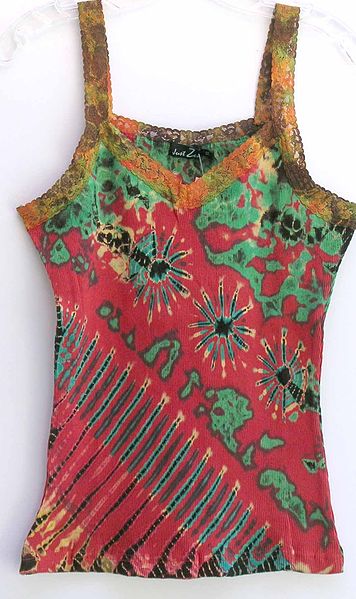Tie-dye is a term used to describe a number of resist dyeing techniques and the resulting dyed products of these processes. The process of tie-dye typically consists of folding, twisting, pleating, or crumpling fabric or a garment, before binding with string or rubber bands, followed by the application of dye or dyes. The manipulations of the fabric before the application of dye are called resists, as they partially or completely prevent ('resist') the applied dye from coloring the fabric. More sophisticated tie-dye may involve additional steps, including an initial application of dye before the resist, multiple sequential dyeing and resist steps, and the use of other types of resists and discharge.
An example of a tie-dyed T-shirt
A tie-dyed spiral pattern
Example of Mudmee tie-dye, an art form originating in Thailand
Traditional Dali Bai tie-dye
Resist dyeing (resist-dyeing) is a traditional method of dyeing textiles with patterns. Methods are used to "resist" or prevent the dye from reaching all the cloth, thereby creating a pattern and ground. The most common forms use wax, some type of paste made from starch or mud, or a mechanical resist that manipulates the cloth such as tying or stitching. Another form of resist involves using a dye containing a chemical agent that will repel another type of dye printed over the top. The best-known varieties today include tie-dye, batik, and ikat.
A nembok process in batik-making method especially for batik tulis (handmade batik).
Batik, created using the technique of wax-resist dyeing originated from Indonesia.
Rōketsuzome printing wheels at Roketsuzome Yamamoto, Kyoto.
A mix of modern and traditional Ukrainian pysanky








